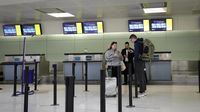Heathrow Airport in London, the fifth busiest airport in the world, resumed full operations on Saturday, March 22, 2025, after a devastating electrical fire caused closures and travel chaos the previous day. The fire erupted in an electrical substation, leading to a loss of power that suspended operations for more than 16 hours.
The incident had a ripple effect on the travel industry, stranding thousands of passengers as airlines scrambled to rearrange flights and accommodate those affected. Over 1,400 flights were canceled, impacting up to 291,000 passengers.
A spokesperson for Heathrow conveyed that measures were being taken quickly to restore order. "We have hundreds of additional colleagues in our terminals and we’ve added flights to the schedule today to facilitate travel for an additional 10,000 passengers through the airport," they stated.
The scaled disruptions raised concerns among travelers and travel industry leaders alike. Willie Walsh, head of the International Air Transport Association (IATA), criticized the airport’s lack of contingency planning. "It’s a clear failure of planning by the airport," he said. The incident marked a significant setback for an airport that routinely handles vast passenger volumes.
As the situation unfolded, the National Grid confirmed that electricity had been restored to all users connected to the North Hyde substation, including Heathrow itself. This marked a key step toward recovery, though remnants of the initial chaos lingered that Saturday morning.
Flight schedules remained tentative. British Airways cautiously predicted that about 85 percent of their scheduled flights for Saturday would operate without cancellations. However, they acknowledged the continued potential for delays as they worked to reroute aircraft and crew back to their bases.
Despite the restoration of service, incidents of cancellations persisted, even amid the recovery. Between 6:35 and 6:55 local time on Saturday, eight flights from carriers including Virgin Atlantic and Air India were canceled—adding to the frustration of weary travelers.
While the Metropolitan Police initially assigned the probe into the fire to their counter-terrorism division as a precautionary measure, they later confirmed it was not suspicious in nature, alleviating some public concern regarding the incident's cause.
In the aftermath, hotel accommodations near the airport surged in price. Some rooms were being listed for as high as $645—around five times the typical rates—due to the influx of passengers seeking shelter. This stark increase in lodging prices only compounded the stress of those affected by the grounding of flights.
Heathrow's reopening meant a step toward normalcy, but the frustration and logistical challenges faced by passengers drew attention to broader issues of airport infrastructure resilience. Experts in the aviation industry noted that the fire’s impact echoed memories from the volcanic ash crisis of 2010, where travelers were similarly stranded en masse.
As the clock struck March 22 and operations resumed, the airport aimed to make amends. The first flights included TAP to Lisbon, Austrian Airlines to Vienna, and Swiss Airlines to Zurich, signaling the gradual return to normal air traffic. Nevertheless, given the scale of disruption, full recovery from this incident was seen by many as a daunting task.
In light of the event, the need for comprehensive contingency strategies became more apparent—a lesson not just relevant for Heathrow, but for airports worldwide grappling with increased traffic and the unpredictability of emergencies. Moving forward, all eyes will be on how Heathrow implements these lessons to bolster future operational resilience.






